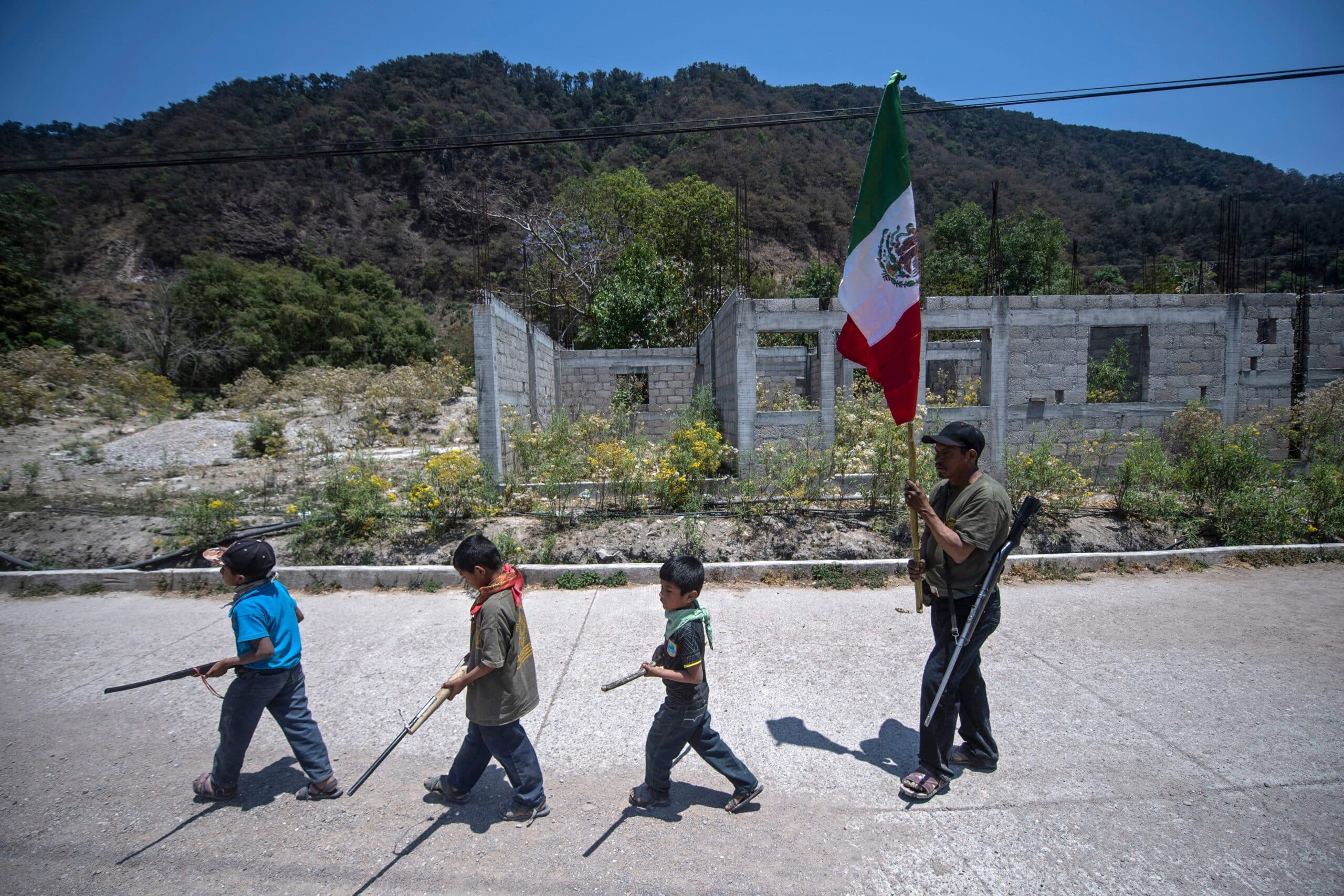This Indigenous Village In Mexico Trains Their Children As Soldiers To Combat Gang Violence
via Getty Images
In the town of Ayahualtempa, Mexico, in the state of Guerrero, reporters see a shocking image whenever they visit. Children armed with guns, trained to defend themselves. The disturbing scene is meant to be shocking. The village of Ayahualtempa is under constant attack. A prominent heroin “corridor”, they are the victims of violence and carnage at the hands of gangsters and the cartel.
In order to gain the Mexican government’s attention, the Ayahualtempa villagers dress their children up as soldiers. Then, they invite the media in.

When reporters arrive, the children of Ayahualtempa dutifully line up and put on a performance. They march, they show how they would shoot a gun from one knee, or from flat on their bellies. They tell reporters that their mock-violent performance is “so the president sees us and helps us,” as a 12-year-old child named Valentín told the Associated Press.
Because the Mexican government doesn’t protect Ayahualtempa, the display of child soldiers is a form of protest for the small indigenous village. The people of this remote region of Guerrero want protection from the National Guard, and financial help for widows and orphans who have been made so from organized crime.
The villagers don’t trust local authorities, and for good reason. Guerrera is the Mexican state in which 43 teaching students were abducted and killed in an event that is known as the “Iguala mass kidnapping”. Authorities arrested 80 suspects in connection to the event. 44 of them were police officers, working in conjunction with a network of cartels.
Although the demonstrations function largely as a publicity stunt, violence is very much a part of these children’s lives.

Parents train their children to walk to school with loaded guns, ready to defend themselves against violent gangsters.
The attention-grabbing antics have, to some extent, worked. On one occasion, the government donated some housing material. On another, benefactors gave the community’s orphans and widows scholarships and houses. But as soon as the periodic media storms die down, the federal government continues pretending Ayahualtempa doesn’t exist.
The hypocrisy of the government’s response is frustrating to many. “We’ve normalized that these children don’t eat, are illiterate, are farm workers. We’re used to the Indians dying young, but, ‘How dare they arm them!’” said local human rights activist Abel Barrera to the AP, with a heavy dose of sarcasm.
As for now, until the government moves to protect the community, they say they will continue their demonstrations. “They see that the issue of the children is effective for making people take notice and they think: If that’s what works, we’ll have to keep doing it,” said Barrera.




